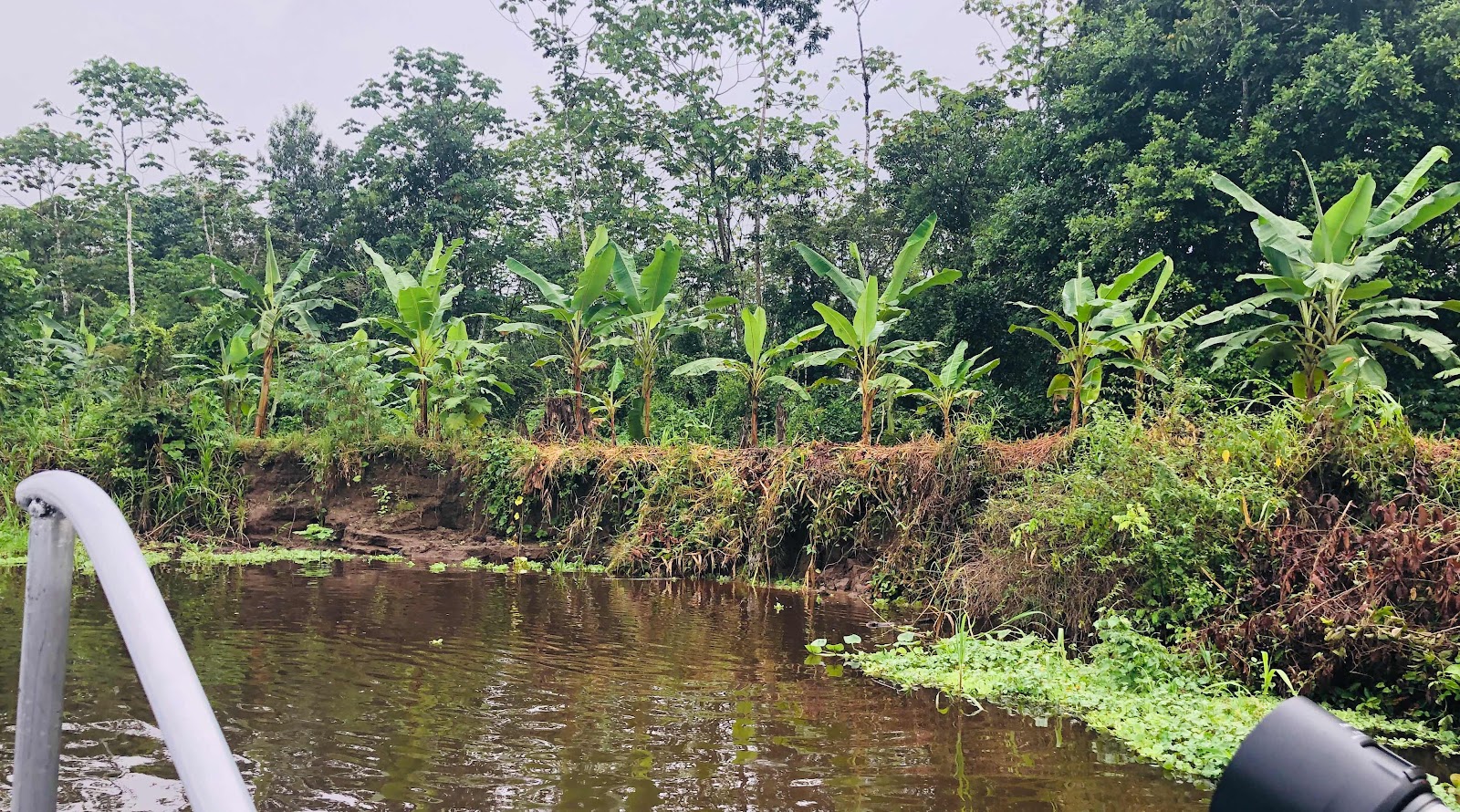Tuesday, March 10, 2020. Let’s be honest! There is absolutely no chance I’ll remember the names of all the birds we have seen so far - on our very first outing - let alone all the other ones to come. There are a lot of birds here! Our guide specializes in birds and can name them by call as well as by sight (which is impressive considering how many there are and the fact that they all call at the same time.). (Side note: even though he is a bird expert, he told us he really does not like to lead expeditions of bird watchers, because they are much too serious and never smile. They just come with their check list, and that’s all that matters - there are not here to have fun!).









The day started early (6 am boat launch) because that’s when the birds are most active. Today, we are in the “Réserva National Pacaya Samiria,” named for the “black river” that goes through it: Most of the large rivers in the Amazon basin have brown water, because they carry the sediment from the Andes. But the local creeks have a different bottom and clearer water, that changes the color to a significantly darker hue, almost black.
This being a reserve and not a national park, little river villages can be found along the banks. This is a spot where the villagers have planted bananas.
The inhabitants grow bananas along the shore and, during the dry season, when the river is much narrower, they use the 3 months of relatively dry weather to grow rice, corn, and all kinds of other vegetables on the banks of the river. We saw a few of the local villagers today, fishing with hand made fishing poles, in hand made canoes. Fish makes up about 80% of their diet.
The little villages look very basic, but not necessarily poor, in the sense that the many children all look happy, healthy and well fed. They don’t beg, but they do sell locally made goods - including soap made from a particular palm tree (I bought some). There is no electricity, but the one satellite dish and generator ensures that they can watch the all important soccer games. (The generator only goes on for special occasions). This particular village is home to 130 people, it has a school that goes from kindergarten to the end of elementary school (after which, children go to Nauta). The teachers come for 9 months at a time from either Nauta or Iquitos. While it does look like a pleasant and quiet life, it must at times get boring.
The main reason for our expedition though was to look for wildlife. We saw several type of herons, kingfishers, rappers, egrets, swallows, wrens.. (see pictures of birds at end of blog). Parakeets and parrots were flying above us all the time, although it was hard to see their colors well because at that time of day the light is very flat - but we will have other opportunities.
We also saw 2 types of monkeys (tamarins and another larger one whose name I forget- see picture at top of blog),
and a very sleepy sloth......
and a very sleepy sloth......
This tree lizard was nice enough to pose for us.
I caught a very quick glance at a pink dolphin, but am hoping to see many more!
We had breakfast on our skiffs, on the side of the jungle, which gave us more time for exploration (in general, the plan is to come back to the boat for breakfast after the morning ride).
Our next activity was either another boat ride, or a swim in the Amazon. I just could not resist the swim! The water is not clear, because of the tannins that result from all the biomass decomposing. But it is very clean. And the temperature was perfect! We floated around happily for about 40 minutes. It was delightful!
After lunch, and after too short of a nap, we had a lecture about plants that are used by Shamans all over South America for healing and spiritual enlightenment- and specifically about Ayahuasca, which is the most important here. It’s main effect is to make you puke.... but after that, you get hallucinations that are supposed to bring knowledge and a higher level of understanding of the world. The puking (which is supposed to be very bad and part of the process) is a VERY strong deterrent for me, so I think I’ll pass...... But we had a local Shamana come and discuss her role as a healer and it was very interesting. She did a ritual cleansing for us, using tobacco. It was cool.
We then went on a canoe ride around the local village (which happens to have a cellular tower, and electricity). The dugout canoes are heavy and a bit wobbly, but we made it back before the rain.
Before dinner, the crew put on a South American music show - they were truly AWESOME! The talent - particularly from the guy playing the Andian flutes- was remarkable.
Another dinner of local Peruvian food (a lot of fish and vegetables), and we are in bed early, since we are getting up at 5:15 am again tomorrow.















1 comment:
Cool, Francoise! Thanks for sharing your blog!
Post a Comment